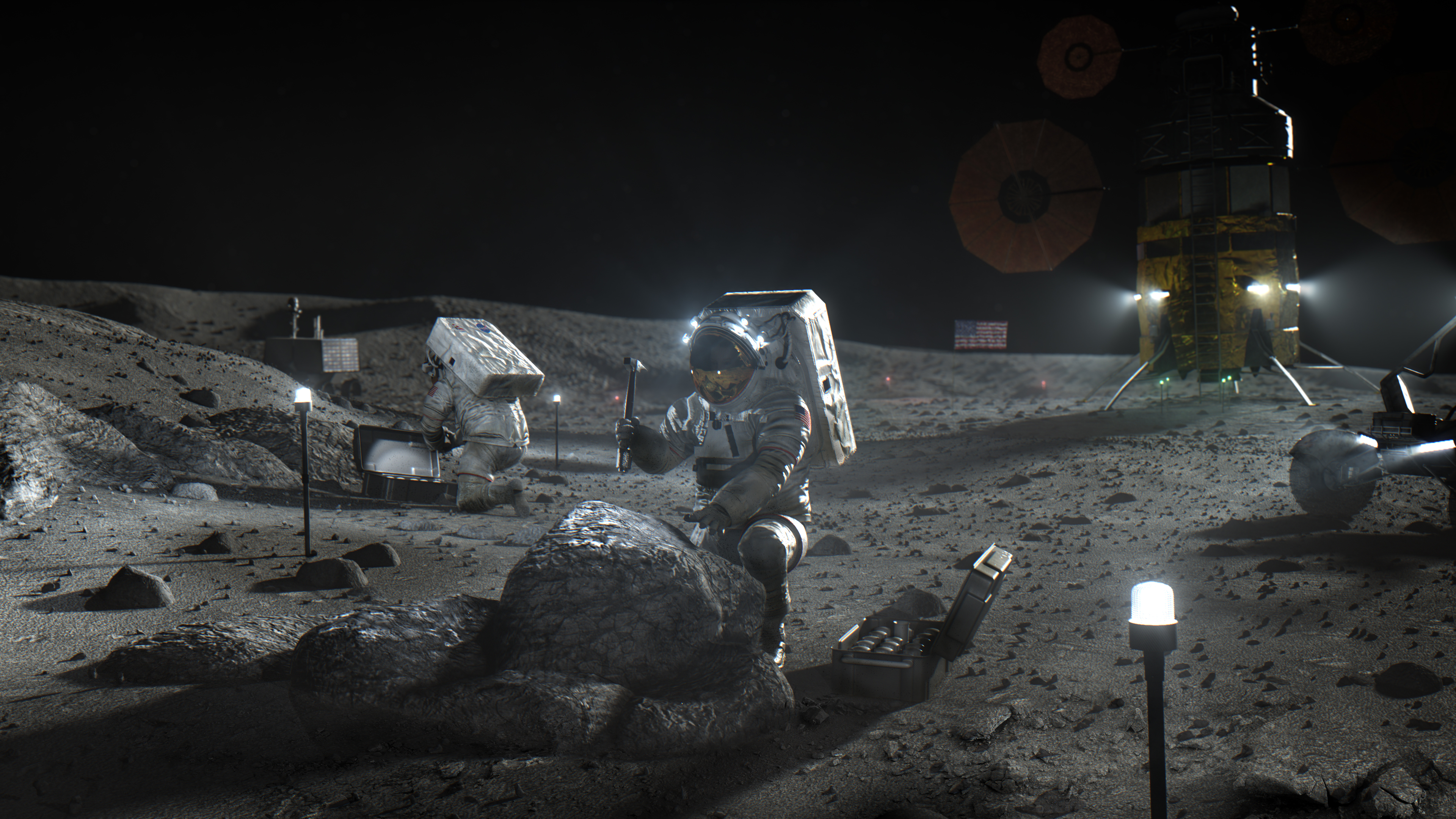
President Donald Trump released a new national space policy Wednesday (Dec. 9), laying out the fundamental principles of, and chief priorities for, the United States' diverse space activities going forward.
The document, which you can read here, has four main top-level goals, White House officials said: expanding the American commercial space sector, increasing international cooperation, continuing ambitious science and exploration activities, and bolstering national security and the United States' leadership position in space.
That fourth objective is particularly important, for national security "undergirds everything we do," Scott Pace, deputy assistant to the president and executive secretary of the National Space Council (NSC), said Wednesday during the eighth meeting of the NSC, which was held at NASA's Kennedy Space Center in Florida.
"By charting a clear course for United States space activities, this policy reaffirms our leadership in the space domain and our status as the world’s foremost spacefaring nation," Trump said in a statement Wednesday. "This policy represents a whole-of-government approach that recognizes space as a national imperative."
Related: Presidential visions for space exploration, from Ike to Trump
The United States' long-held space dominance has come under serious threat recently, primarily from China and Russia, multiple government officials said during Wednesday's NSC meeting. For example, both nations are actively developing anti-satellite technology that could destroy or disable American satellites, said Director of National Intelligence John Ratcliffe.
"In short, the threat to the United States and allied space systems continue[s] to grow, and we should not allow that threat to grow unabated," Ratcliffe said during the NSC meeting.
Get the Space.com Newsletter
Breaking space news, the latest updates on rocket launches, skywatching events and more!
The newly issued national space policy recognizes that "space is and should be a priority intelligence domain," Ratcliffe added. He also said that his team is working with leaders of the U.S. Space Force to evaluate whether the new military branch will come aboard as the 18th member of the American intelligence community. A decision on that is expected in the next month or two, Ratcliffe said.
"If our adversaries challenge us in space, they will face a truly united national security space team," he said.
The new national space policy, a 40-page document, is similar in many ways to the official policy issued in 2010 by President Barack Obama. Both documents stress the need to act responsibly in space and strengthen American leadership in this domain, as well as to boost the private space sector and nurture international cooperation.
The Trump administration has taken a considerable interest in space over the past four years. For example, the president has signed five space policy directives, including one that directed NASA to return astronauts to the moon as a precursor to crewed Mars missions, and another that established the Space Force, the nation's first new military branch since the Air Force was created in 1947. President Trump also resurrected the NSC, which had been dormant since the early 1990s.
It's unclear, however, how much of an impact the newly issued national space policy will have. The Trump administration will last just six more weeks, and President-elect Joe Biden will begin implementing his own space priorities after taking office on Jan. 20, 2021.
Mike Wall is the author of "Out There" (Grand Central Publishing, 2018; illustrated by Karl Tate), a book about the search for alien life. Follow him on Twitter @michaeldwall. Follow us on Twitter @Spacedotcom or Facebook.
Join our Space Forums to keep talking space on the latest missions, night sky and more! And if you have a news tip, correction or comment, let us know at: community@space.com.

Michael Wall is a Senior Space Writer with Space.com and joined the team in 2010. He primarily covers exoplanets, spaceflight and military space, but has been known to dabble in the space art beat. His book about the search for alien life, "Out There," was published on Nov. 13, 2018. Before becoming a science writer, Michael worked as a herpetologist and wildlife biologist. He has a Ph.D. in evolutionary biology from the University of Sydney, Australia, a bachelor's degree from the University of Arizona, and a graduate certificate in science writing from the University of California, Santa Cruz. To find out what his latest project is, you can follow Michael on Twitter.









